8 Famous Writers' Desks You Could Have Owned
In a word: mahogany
Coming up for auction on March 8 is a portable writing desk owned by Bret Harte, a short-story writer and poet who mined the California Gold Rush for his best-known stories, such as, “The Luck of Roaring Camp,” published in 1868. Harte has been referred to as the “leading literary light of the Pacific coast” during the post-Civil War era; he was even a close pal of Mark Twain’s. (Until he wasn’t: “Harte is a liar, a thief, a swindler, a snob, a sot, a sponge, a coward, a Jeremy Diddler, he is brim full of treachery, and he conceals his Jewish birth as if he considered it a disgrace.”)
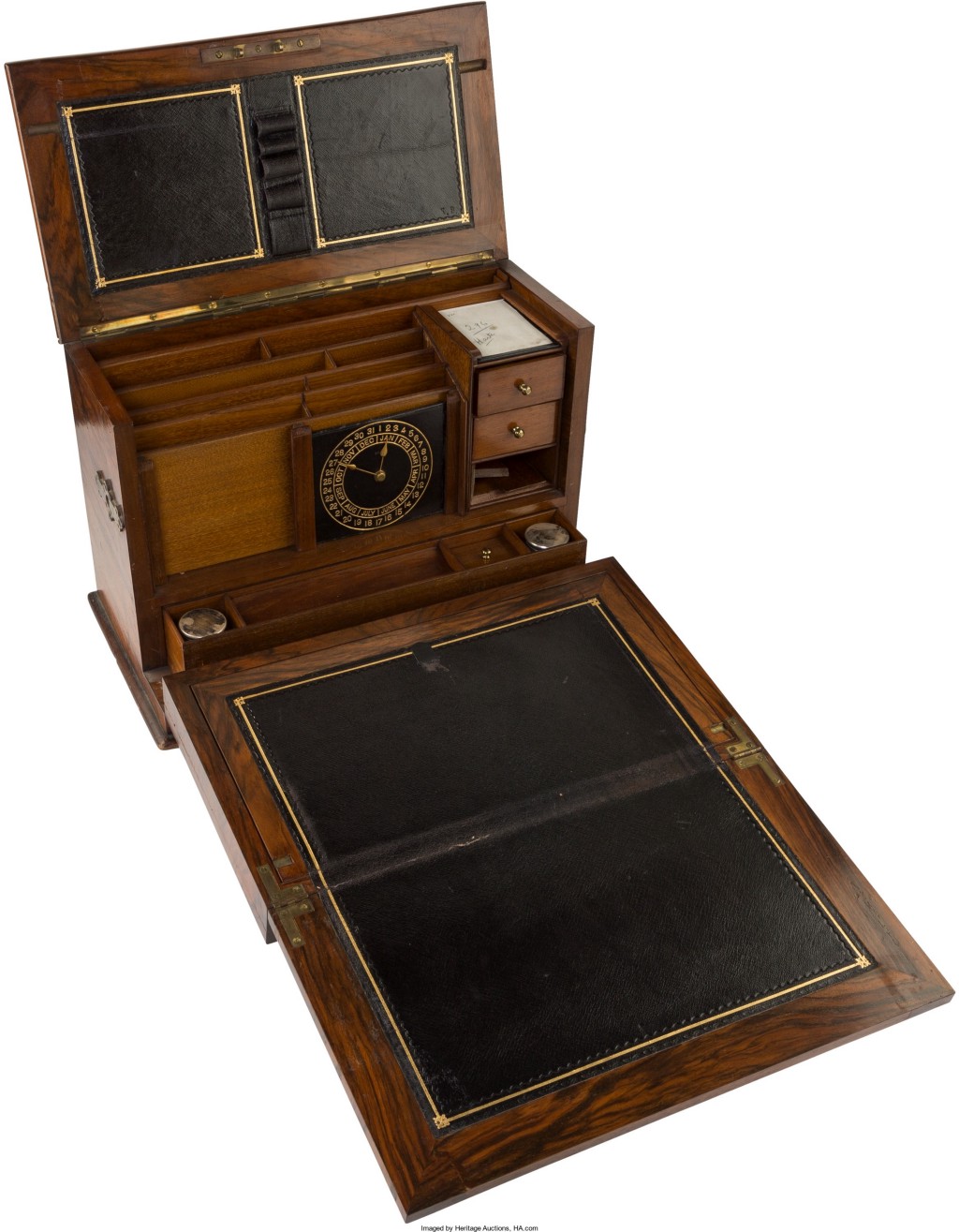
As a writer and an editor of literary journals, Harte struggled. So he packed up and relocated to Europe, where he received this swanky walnut-and-brass number as a gift in the late 1870s. According to the auction house’s catalog, “he composed all of the stories that he wrote in Europe on this desk, and continued his use of the desk until he passed away in 1902.”
Famous writers’ desks occasionally appear at public auction, to mixed results. The bidding on Harte’s desk starts at $2,000, which isn’t all that much considering its history. Who wouldn’t want to own a desk (perhaps even a chair) so closely linked to an author whom they admire, or aspire to emulate? As the catalog notes, “For authors of this period, a writing desk is one of the most intimate association ‘realia’ that a collector might hope to acquire and cherish.”
What other celebrated authors’ desks have been recently offered at auction — i.e., that you might have purchased had you the foresight and the wherewithal?
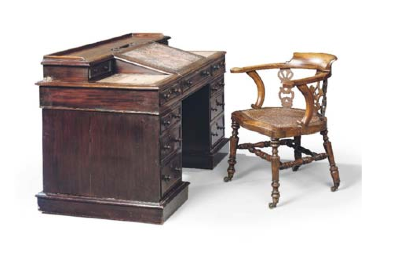
Let’s start with Charles Dickens, whose mid-nineteenth-century mahogany desk sold to a private buyer for the equivalent of $850,000 at Christie’s London in June 2008. Descended through the Dickens family, it was known to be the very desk at which Great Expectations was penned. In 2015, the desk was again for sale, discreetly, as the Charles Dickens Museum summoned a $1.2 million grant from the National Heritage Memorial Fund and “saved it for the nation” (from pesky American collectors, we’re guessing).
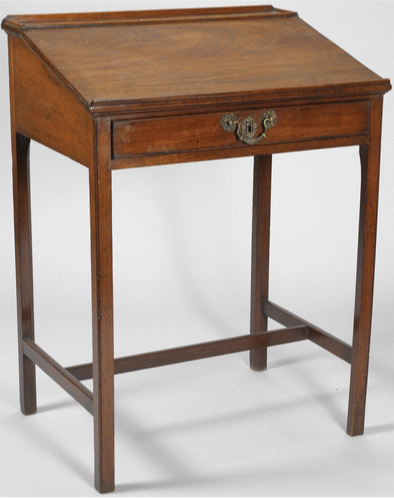
Charlotte Brontë: On December 17, 2009, Sotheby’s purveyed this sloping George III mahogany desk, from the collection of William Law, who purchased items directly from Charlotte’s widower, the Rev. A. B. Nicholls. More than doubling its estimate, the artifact reached £20,000 (about $32,400). Its anonymous buyer — dear heart — donated it back to the Parsonage, the Brontës’ home, in 2011.
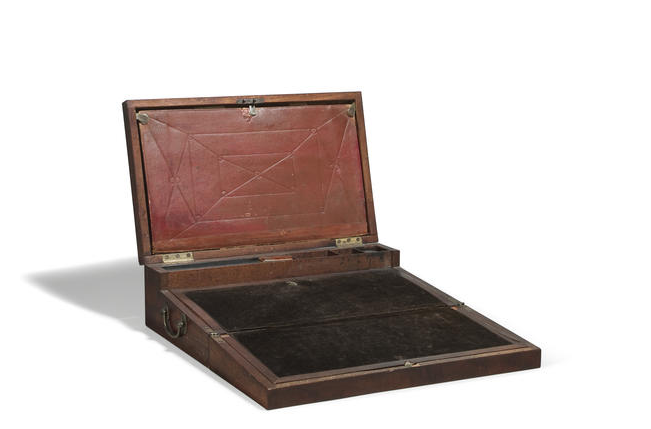
Herman Melville: This mahogany traveling lap desk, lined in brown velvet but still rather austere in comparison to Bret Harte’s dandier model, was owned by the author of Moby-Dick. Interestingly, when Bonhams auctioned the Victorian-era laptop in New York on June 22, 2011, it was a fellow author who won it for $34,160: Maurice Sendak.
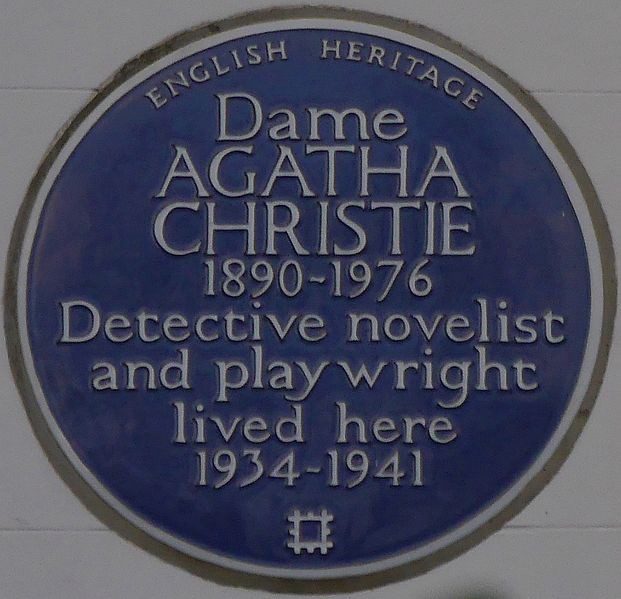
Agatha Christie: Few details can be mustered about this desk since, mysteriously, no record of it appears on the website of the auction house, Cheffins of Cambridge, England, that sold it. Here’s what we know: it was constructed of mahogany. Christie, aka ‘The Queen of Crime,’ used the antique in her Kensington home. Upon her death in 1976, it was relegated to an attic before turning up at auction on March 25, 2009. It appears to have sold for about $3,650.
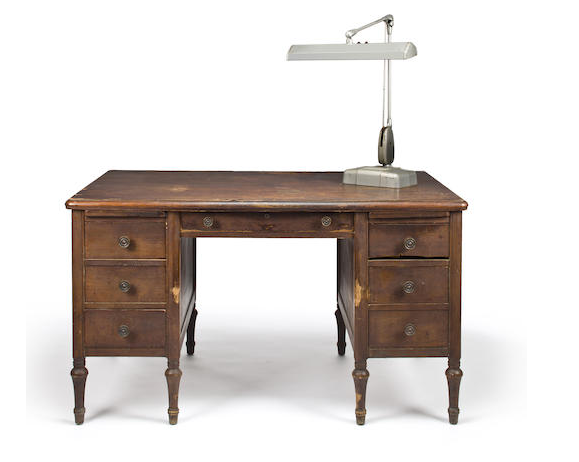
Joseph Heller: For about $1,500, you could have acquired the scruffy, mid-century wooden desk, complete with coffee rings, that belonged to the Catch-22 author. It lacked for bidders when it was offered, without reserve, by Bonhams in New York on December 15, 2011. The desk and lamp had resided within Heller’s writing studio at his East Hampton home “from at least the early 1980s,” stated the auction catalog. Like Heller, Bram Stoker (Dracula) felt the shade when his “refurbished” (mahogany?) desk failed to meet its asking price at an LA auction in 2012. But all’s well that ends well: Heller’s widow donated the desk to the University of South Carolina.
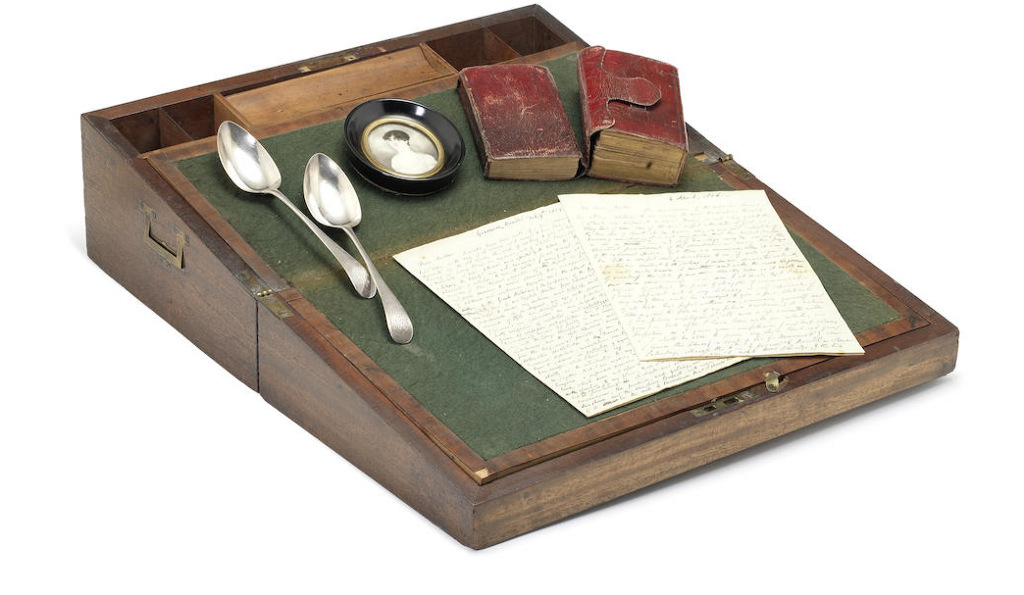
Samuel Taylor Coleridge: When the English poet-philosopher, whose “The Rime of the Ancient Mariner” you likely read in high school, died in 1834, he left this “mahogany writing slope” behind. When Bonhams first presented the lap desk for sale in 2013, it attracted no interest; when it was put on the market (for much less) in 2014, still nada. On March 18, 2015, success at $7,500.
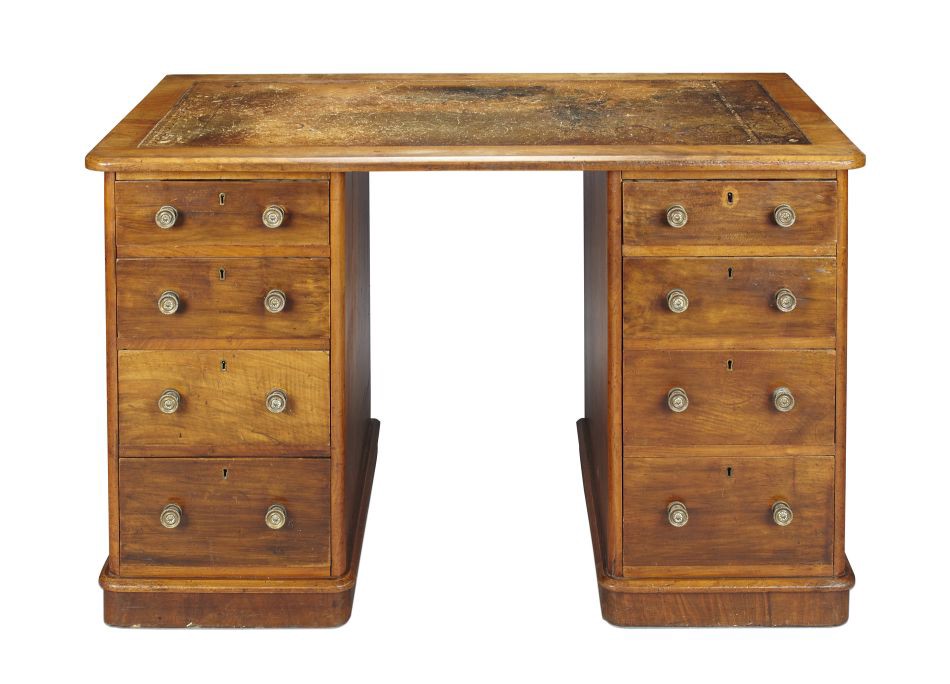
Robert Browning: According to the distant relations who consigned this mahogany pedestal desk to an Edinburgh sale on March 5, 2014, it dwelt in Browning’s London home, where he lived from 1887 until his death two years later. His wife, fellow poet Elizabeth Barrett Browning, had died in 1861. If this desk had been hers, would it have made more than the $6,000+ it ultimately sold for? Moot point: Princeton already owns her “slant-topped” model (obvs, made of mahogany).
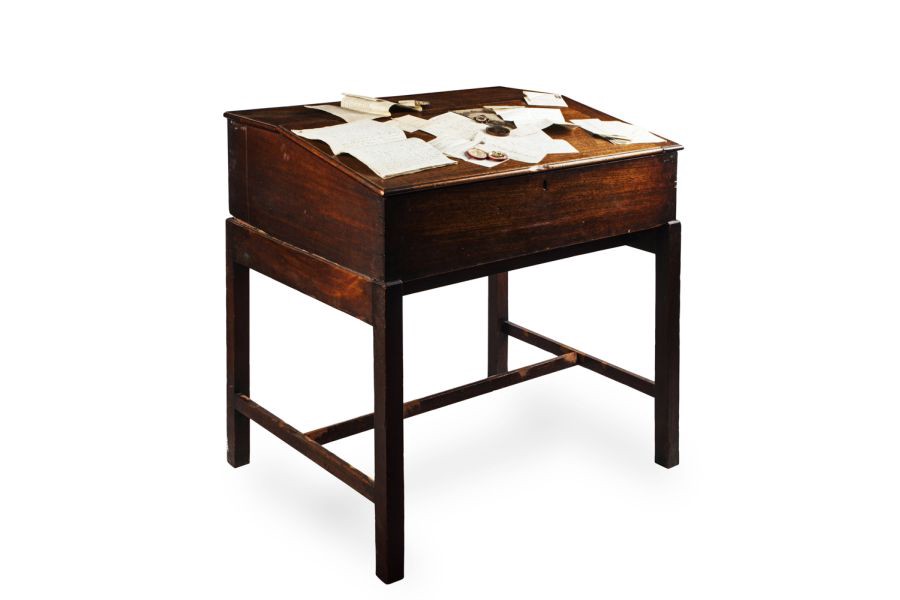
Sir Walter Scott: At the same Edinburgh auction house, Lyon & Turnbull, on September 10, 2014, Sir Walter Scott’s sloped mahogany desk went under the hammer. It was in this “old writing desk,” housed in a “lumber garret” at Abbotsford, where Scott later recounted finding the “long-lost manuscript” of his Waverley. A bargain at about $8,500, the literary relic is currently on display at the Writers’ Museum, courtesy of its private owner.
Rebecca Rego Barry is the author of Rare Books Uncovered: True Stories of Fantastic Finds in Unlikely Places.
